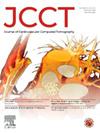Regional and socioeconomic disparities in calcium scans
IF 5.8
2区 医学
Q1 CARDIAC & CARDIOVASCULAR SYSTEMS
引用次数: 0
Abstract
Introduction
Disparities in cardiovascular care are well recognized, with socioeconomic status being one of the strongest determinants of cardiovascular disease outcomes. This study evaluates whether these disparities translate to coronary artery calcium (CAC) scan utilization. Specifically, we aim to describe regional variation and socioeconomic variables that impact CAC utilization across the United States relative to the prevalence of coronary artery disease (CAD) and related comorbidities.
Methods
This cross-sectional study integrates county-level CAC utilization with CAD prevalence and publicly available socioeconomic variables including self-identified ethnicity, education, and adjusted gross income. CAC utilization rates were sourced from 2022 hospital commercial claims, outpatient Medicare service claims, and independent imaging center claims. Heart disease prevalence and socioeconomic variables were extracted from the Centers for Disease Control and Prevention and the National Center for Chronic Disease Prevention and Health Promotion. Adjusted gross income per capita was gathered from Internal Revenue Service data.
Results
CAC utilization was evaluated across 808 counties within the United States, representing 600,379 claims. Median utilization was 1.62 scans per 1,000 persons with a range of 0.03 to 104.39. The West had the highest CAC scan utilization rate (median 3.09 scans per 1,000 persons) with a CAD prevalence of 548 per 100,000 persons. In contrast, the Midwest had the lowest utilization rate (median 1.24 scans per 1,000 persons) with a CAD prevalence of 635 per 100,000 persons.
Socioeconomic factors that favor higher CAC utilization include a larger density of White/Caucasian ethnicity (p = 0.007) and a higher adjusted gross income per capita (p = 0.006). Counties with the lowest rates of CAC utilization have a higher population of African Americans (p <0.001) and a higher proportion of females (p <0.001).
Conclusion
This analysis highlights regional and socioeconomic differences in CAC utilization in the United States. Under-represented ethnicities such as African Americans have among the lowest rates of CAC utilization despite having a higher burden and mortality from heart disease. Discordance between CAC utilization, heart disease prevalence and socioeconomic status reveals a need for targeted interventions and policies aimed at mitigating structural barriers that perpetuate health inequities.
钙扫描的地区和社会经济差异。
简介心血管疾病治疗中的差异已得到公认,而社会经济地位是心血管疾病结果的最重要决定因素之一。本研究评估了这些差异是否会转化为冠状动脉钙(CAC)扫描的使用率。具体来说,我们的目的是根据冠状动脉疾病(CAD)和相关合并症的发病率,描述影响全美冠状动脉钙化扫描利用率的地区差异和社会经济变量:这项横断面研究将县级 CAC 利用率与 CAD 患病率和公开可用的社会经济变量(包括自我认同的种族、教育程度和调整后的总收入)相结合。CAC使用率来源于2022年医院商业索赔、门诊医疗保险服务索赔和独立影像中心索赔。心脏病发病率和社会经济变量来自美国疾病控制与预防中心和国家慢性病预防与健康促进中心。调整后的人均总收入来自美国国税局的数据:对美国 808 个县的 CAC 使用情况进行了评估,共收到 600,379 份申请。使用率中位数为每千人 1.62 次扫描,范围在 0.03 至 104.39 次之间。西部地区的 CAC 扫描使用率最高(中位数为每千人 3.09 次扫描),CAD 患病率为每 10 万人 548 例。相比之下,中西部地区的使用率最低(中位数为每千人 1.24 次扫描),CAD 患病率为每 10 万人 635 例。CAC使用率较高的社会经济因素包括白人/高加索人种密度较大(p = 0.007)和调整后人均总收入较高(p = 0.006)。CAC 使用率最低的县非裔美国人口较多(p = 0.006):这项分析凸显了美国在 CAC 使用方面的地区和社会经济差异。尽管非裔美国人的心脏病负担和死亡率较高,但其使用 CAC 的比例却最低。CAC使用率、心脏病发病率和社会经济地位之间的不一致表明,需要采取有针对性的干预措施和政策,以减少导致健康不平等现象长期存在的结构性障碍。
本文章由计算机程序翻译,如有差异,请以英文原文为准。
求助全文
约1分钟内获得全文
求助全文
来源期刊

Journal of Cardiovascular Computed Tomography
CARDIAC & CARDIOVASCULAR SYSTEMS-RADIOLOGY, NUCLEAR MEDICINE & MEDICAL IMAGING
CiteScore
7.50
自引率
14.80%
发文量
212
审稿时长
40 days
期刊介绍:
The Journal of Cardiovascular Computed Tomography is a unique peer-review journal that integrates the entire international cardiovascular CT community including cardiologist and radiologists, from basic to clinical academic researchers, to private practitioners, engineers, allied professionals, industry, and trainees, all of whom are vital and interdependent members of our cardiovascular imaging community across the world. The goal of the journal is to advance the field of cardiovascular CT as the leading cardiovascular CT journal, attracting seminal work in the field with rapid and timely dissemination in electronic and print media.
 求助内容:
求助内容: 应助结果提醒方式:
应助结果提醒方式:


